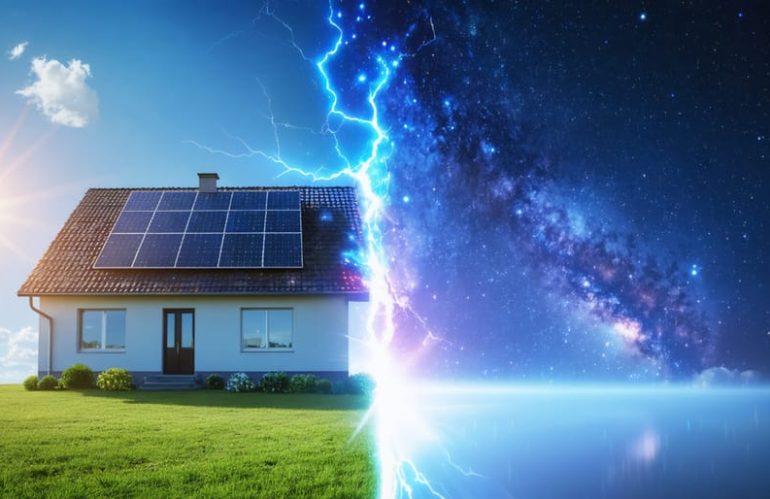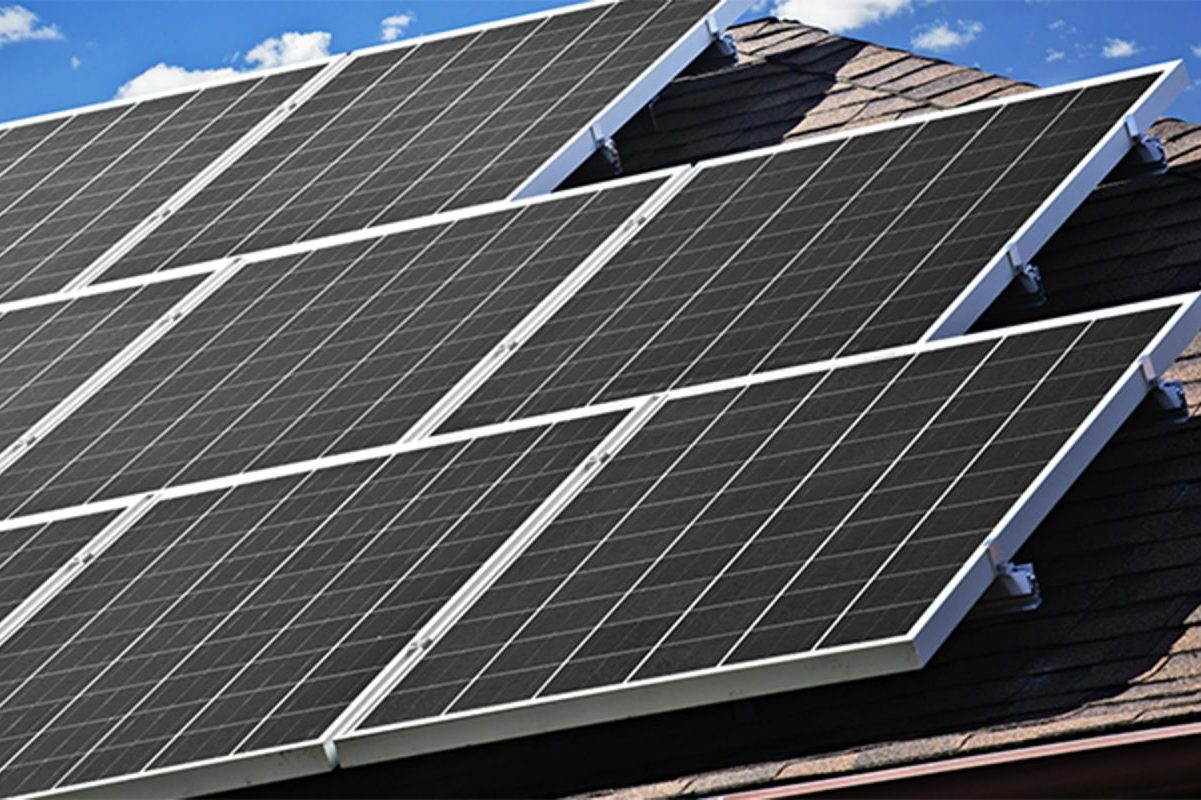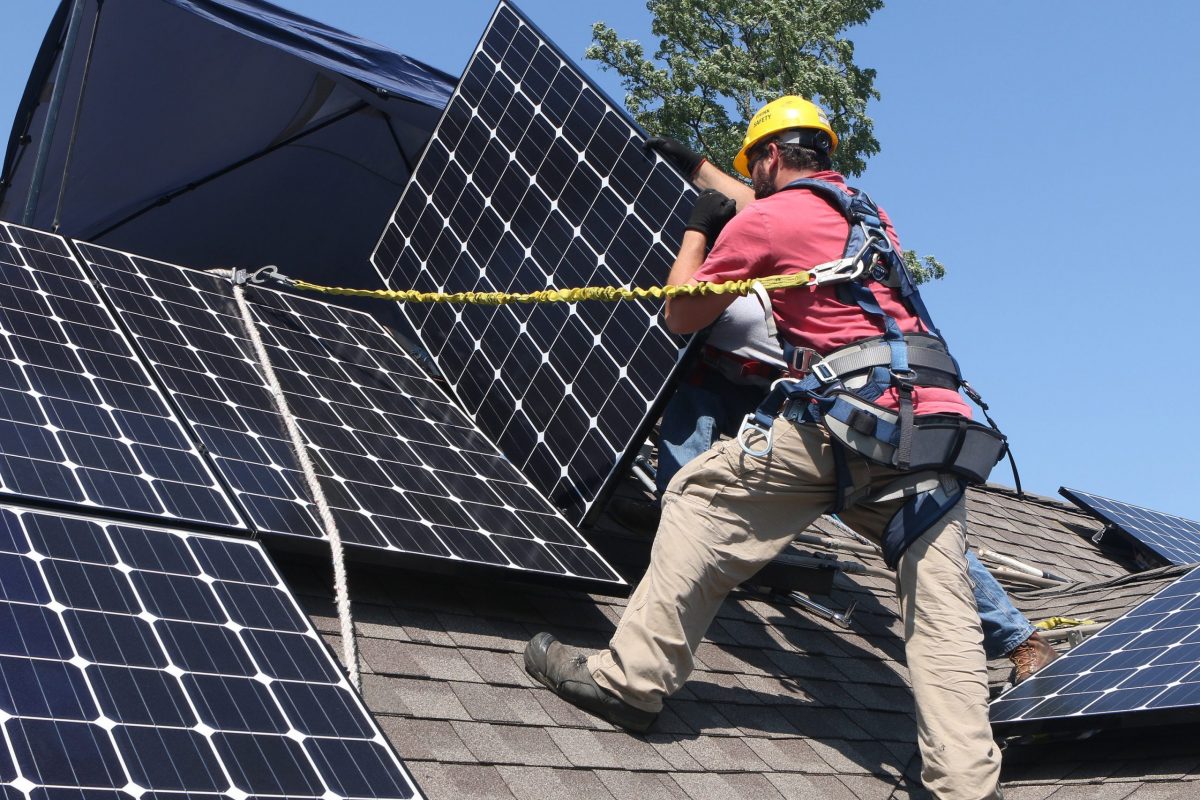Battery storage systems are revolutionizing how homeowners harness and utilize renewable energy, offering a practical solution to one of sustainable power’s biggest challenges: intermittency. By storing excess solar or wind energy for later use, these systems provide energy independence, reduced utility bills, and reliable backup power during outages.
Today’s battery technology has evolved far beyond its humble beginnings, with modern lithium-ion systems offering efficient, compact solutions that integrate seamlessly with existing home solar installations. For homeowners, this means the ability to power their homes through the night using stored solar energy, maintain critical systems during grid failures, and even sell excess power back to utility companies.
The growing accessibility of battery storage solutions marks a turning point in residential renewable energy adoption. With prices continuing to fall and technology constantly improving, home battery systems are becoming an increasingly attractive investment for environmentally conscious homeowners looking to maximize their energy independence while reducing their carbon footprint and monthly electricity costs.
These advancements in battery storage technology aren’t just changing how we power our homes – they’re transforming our entire relationship with energy consumption and production, making true energy independence more achievable than ever before.
Why Your Solar Panels Need a Battery Backup
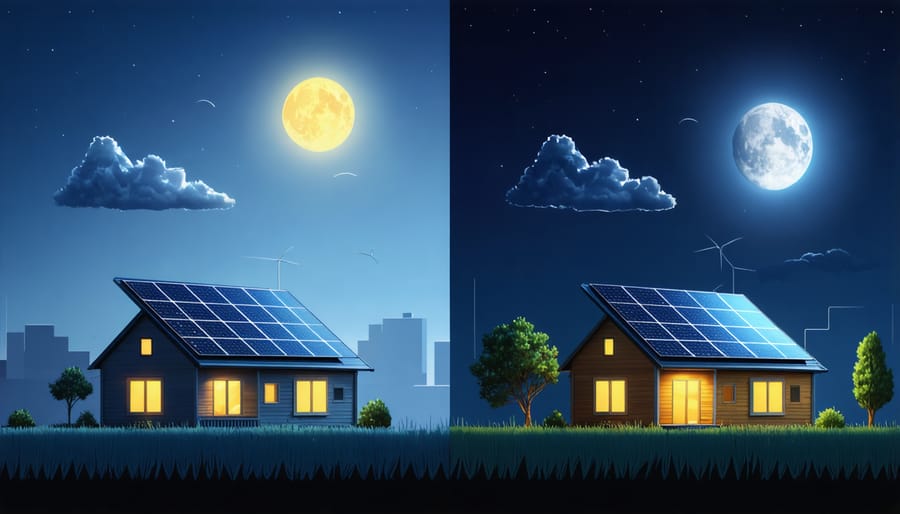
24/7 Power Access
One of the most compelling advantages of battery storage systems is their ability to provide reliable power around the clock. While solar panels only generate electricity during daylight hours, batteries act as your personal energy bank, storing excess power for use whenever you need it. During the day, your solar panels produce electricity that both powers your home and charges your batteries. As the sun sets, the system seamlessly switches to battery power, ensuring your lights stay on and your appliances keep running.
This continuous power access is particularly valuable during nighttime hours and cloudy days when solar panels aren’t generating electricity. Modern battery systems are smart enough to automatically manage power distribution, drawing from stored energy when needed and recharging when excess power is available. For homeowners, this means no more worrying about weather conditions or time of day affecting your power supply.
The system also provides crucial backup power during grid outages, ensuring your essential appliances continue running when your neighbors might be in the dark. Whether you’re cooking dinner at night or running your air conditioning during a summer storm, battery storage gives you the freedom to use electricity on your terms.
Grid Independence
Battery storage systems offer homeowners an unprecedented level of energy independence, transforming how we interact with the traditional power grid. By pairing battery storage with an off-grid solar system, you can significantly reduce or eliminate your dependence on utility companies.
This independence brings multiple advantages. During power outages, your home remains operational, keeping essential appliances running and your family comfortable. You’ll also have protection against rising electricity rates and peak-hour pricing, as you can use stored energy during expensive rate periods instead of drawing from the grid.
Grid independence also means greater control over your energy consumption patterns. You can optimize when to store, use, or sell excess power back to the grid, maximizing your financial benefits. This flexibility becomes particularly valuable during extreme weather events or grid instability, ensuring your home remains powered regardless of external circumstances.
For environmentally conscious homeowners, reducing grid reliance means decreasing your carbon footprint while contributing to a more sustainable and resilient energy future.
Modern Battery Technology for Your Home
Lithium-Ion Solutions
Lithium-ion batteries have emerged as the go-to choice for home energy storage, offering an impressive blend of reliability and performance. These modern powerhouses pack more energy into a smaller space than traditional batteries, making them perfect for home installations where space is at a premium.
What makes lithium-ion batteries particularly appealing is their impressive 85-95% round-trip efficiency, meaning you’ll retain most of the energy you store. They also maintain consistent performance throughout their discharge cycle, unlike older battery technologies that can lose power as they drain.
Homeowners appreciate that lithium-ion batteries require virtually no maintenance and can last 10-15 years with proper care. They don’t need ventilation systems or regular water top-ups, making them ideal for hassle-free home installation. Their self-discharge rate is also remarkably low, losing only 1-2% of their charge per month when not in use.
Modern lithium-ion systems come with smart features that let you monitor performance through user-friendly apps. You can track energy usage, set charging preferences, and even participate in utility savings programs, all from your smartphone.
While the upfront cost may be higher than other options, the long lifespan, minimal maintenance requirements, and superior performance make lithium-ion batteries a cost-effective choice for most homeowners. They’re particularly well-suited for daily cycling, making them perfect for storing solar energy or participating in time-of-use rate programs.
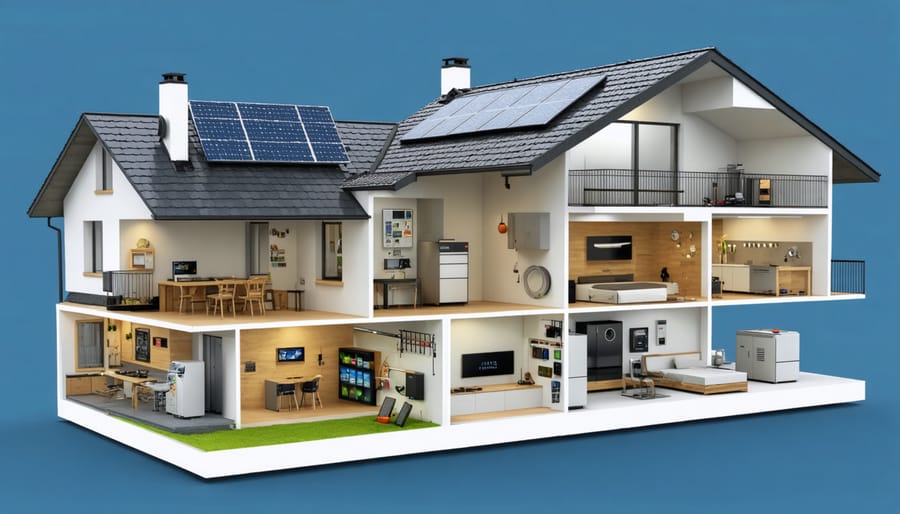
Smart Integration Features
Modern battery storage systems have evolved into sophisticated energy management hubs that seamlessly integrate with your home’s power infrastructure. At the heart of a high-performance solar home system, smart batteries use advanced algorithms to optimize energy flow based on your household’s unique consumption patterns.
These intelligent systems can automatically decide when to store excess solar power, when to use battery power, and when to draw from the grid. Many modern batteries come with user-friendly smartphone apps that provide real-time monitoring and control of your energy usage. You can track power consumption, set preferences for battery use, and even receive alerts about potential savings opportunities.
Smart integration features also enable your battery system to respond to time-of-use electricity rates, automatically switching to stored power during peak pricing periods to maximize cost savings. During power outages, these systems can instantly provide backup power to essential appliances, ensuring your home stays functional.
Weather forecasting integration is another clever feature, allowing your system to prepare for upcoming cloudy days by storing extra energy when sunshine is abundant. Some systems can even communicate with smart home devices, adjusting energy usage based on your daily routines and preferences, making the entire setup truly automated and efficient.
Real Benefits for Your Home
Lower Energy Bills
Battery storage systems can significantly help you save on energy costs through several smart strategies. First, these systems allow you to store excess solar energy produced during sunny days for use during peak evening hours when electricity rates are typically highest. This practice, known as peak shaving, can substantially reduce your monthly utility bills.
By storing energy during off-peak hours when rates are lower and using it during expensive peak periods, you can optimize your energy consumption patterns. Many utility companies charge different rates based on time of use, and battery storage helps you take advantage of these price differences. For example, you might pay half the rate for electricity at midnight compared to 6 PM.
The financial benefits become even more apparent during power outages. Instead of losing perishable food or facing business interruptions, your battery system keeps essential appliances running. This protection against power-related losses represents real savings over time.
Additionally, some regions offer incentives and rebates for installing battery storage systems. When combined with solar panels, these incentives can include tax credits, reduced utility rates, and even payments for sharing excess energy with the grid. Some utility companies also offer special programs where they pay homeowners to use their battery storage during high-demand periods.
Over time, as electricity rates continue to rise, your battery storage system becomes an increasingly valuable investment, providing consistent savings and protection against future rate hikes. The system essentially acts as a hedge against rising energy costs while providing reliable power security for your home.
Backup Power Security
Battery storage systems serve as your personal power insurance policy, providing crucial backup power during grid outages and emergencies. This reliable backup solution ensures that your essential appliances and systems continue running even when the main power grid fails, offering true home energy security for your family.
Modern battery systems automatically detect power outages and seamlessly switch to backup power mode within milliseconds, ensuring your lights stay on and your refrigerator keeps running. This automatic transition is so smooth that you might not even notice a power outage has occurred. During extended blackouts, your stored energy can power critical loads like medical equipment, security systems, and communication devices for hours or even days.
Most battery storage systems allow you to customize which appliances and circuits receive backup power, helping you prioritize essential needs during outages. This flexibility means you can ensure your most critical systems never lose power while extending the backup duration for what matters most.
The peace of mind that comes with knowing your home has a reliable power source during emergencies is invaluable. Whether it’s a severe storm, grid maintenance, or unexpected power failure, your battery storage system stands ready to keep your home functioning. This self-reliance is particularly crucial in areas prone to natural disasters or regions with aging power infrastructure.
Additionally, many modern systems include smart features that help you monitor your backup power status through mobile apps, allowing you to track available energy and manage consumption during outages effectively.
Making the Smart Choice
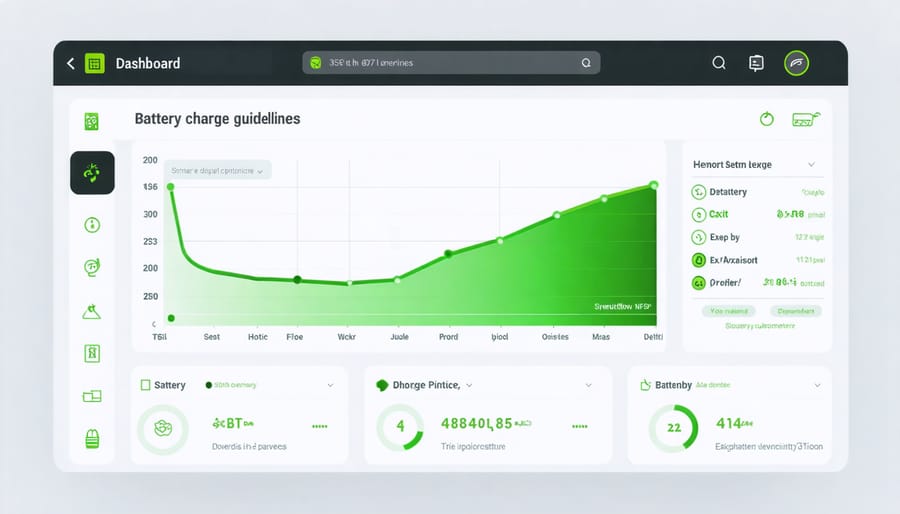
Sizing Your System
Determining the right battery capacity for your home’s energy storage system starts with understanding your daily energy consumption. Begin by reviewing your electricity bills from the past year to find your average daily usage in kilowatt-hours (kWh). Most households consume between 20-30 kWh per day, but your needs may vary.
Consider what you want to power during an outage. Are you looking to run your entire home, or just essential appliances like refrigeration, lighting, and basic electronics? Make a list of crucial devices and their power requirements to help determine your baseline needs.
Next, think about your backup duration goals. Do you want one day of backup power, or are you aiming for multiple days of energy independence? Factor in your local weather patterns and typical outage durations in your area when making this decision.
For solar panel owners, your battery capacity should align with your daily solar production. A good rule of thumb is to size your battery storage to about 50-80% of your daily solar generation. This ensures efficient use of your solar energy while providing adequate backup power.
Don’t forget to account for future needs. If you’re planning to add an electric vehicle or expand your home, consider sizing up your battery system to accommodate these changes. Many homeowners find that starting with a modular system allows for easy expansion later.
Installation and Maintenance
Installing a battery storage system typically takes 1-2 days and requires professional installation by certified technicians. The process begins with a site assessment to determine the optimal location for your battery system, usually in a garage or utility room. Installers will mount the battery unit on the wall, connect it to your home’s electrical panel, and integrate it with any existing solar system.
During installation, expect some brief power interruptions as the system is connected to your home’s electrical infrastructure. Your installer will also set up the monitoring system, allowing you to track energy usage and storage through a smartphone app or web interface.
Maintenance requirements for modern battery storage systems are relatively minimal. Most systems come with warranties ranging from 10-15 years and require only occasional software updates and annual inspections. It’s recommended to keep the area around your battery clean and well-ventilated, and regularly check the monitoring system for any performance issues.
Key maintenance tasks include:
– Quarterly visual inspections for physical damage
– Checking ventilation systems are unobstructed
– Monitoring system performance via the app
– Annual professional inspection
– Keeping software up to date
While most maintenance can be handled remotely or through automated systems, it’s important to have a qualified technician perform any necessary repairs or replacements. Many installers offer maintenance packages to ensure optimal system performance throughout its lifetime.
Battery storage technology represents a crucial stepping stone toward a more sustainable and energy-independent future. By combining renewable energy sources with modern battery systems, homeowners can significantly reduce their carbon footprint while enjoying substantial cost savings on their energy bills. The ability to store excess energy for later use not only provides peace of mind during power outages but also helps stabilize the broader electrical grid.
As battery technology continues to advance and costs decrease, the benefits of implementing these systems become increasingly attractive. From enhanced energy independence to reduced utility bills and environmental protection, battery storage solutions offer multiple advantages for forward-thinking homeowners.
The time to act is now. With generous tax incentives, improving technology, and rising energy costs, investing in battery storage systems has never made more sense. Whether you’re already using solar panels or considering a complete renewable energy system, adding battery storage can maximize your investment and provide lasting benefits for years to come.
By taking this step toward energy independence, you’re not just making a smart financial decision – you’re joining a growing community of environmentally conscious homeowners who are actively shaping a more sustainable future. Consider consulting with local renewable energy experts to explore the best battery storage options for your specific needs and circumstances.

